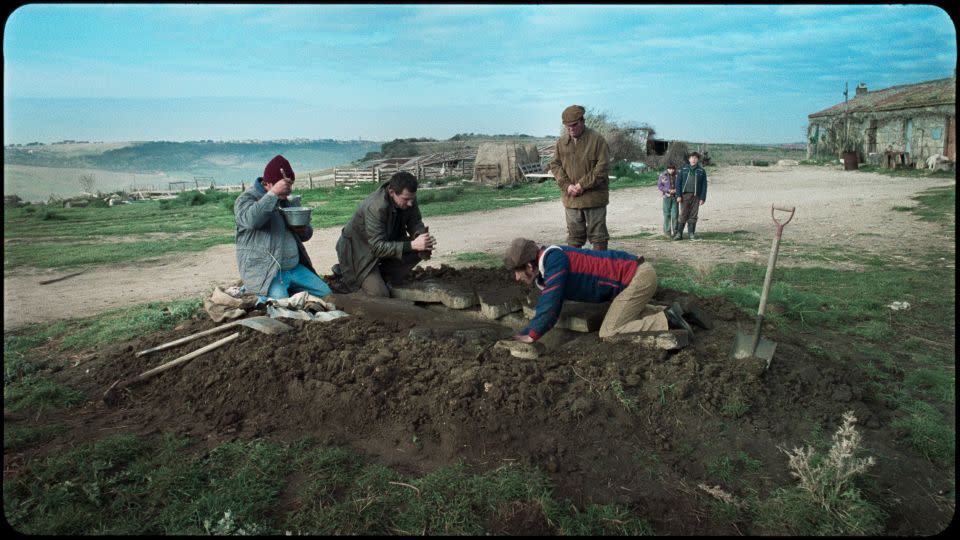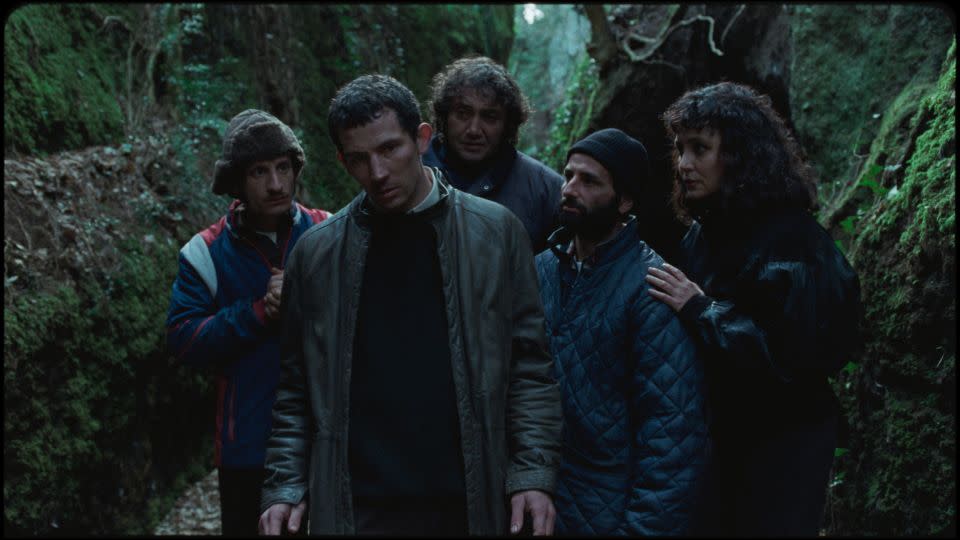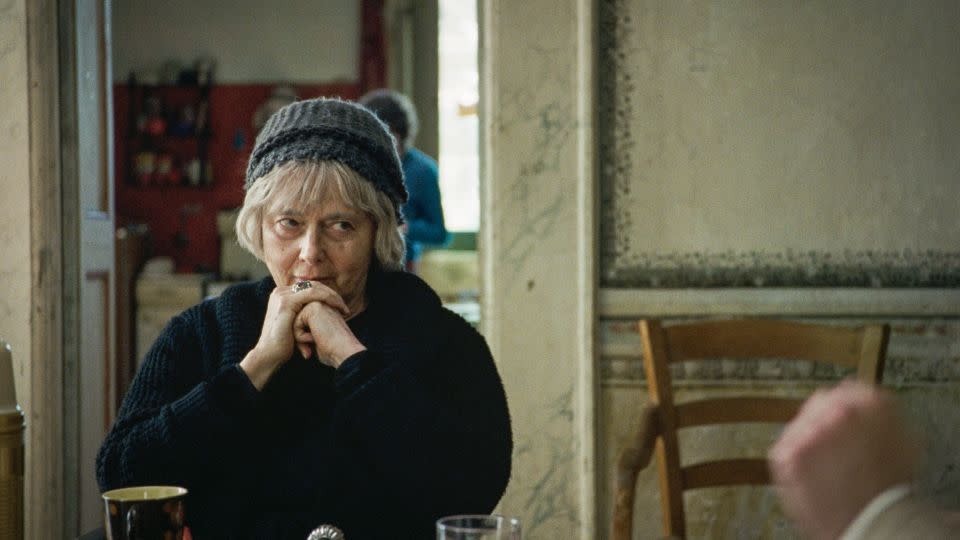‘The past is not dead’: ‘La Chimera’s’ intoxicating look at archaeology unearths questions about Italy’s tomb raiders
In Alice Rohrwacher’s latest movie, the gently hypnotic “La Chimera,” a rakish Josh O’Connor navigates the Italian countryside with a dowsing rod in hand, searching for ancient treasure. O’Connor’s character, Arthur, is one of the whispered about “tombaroli” – grave robbers – who in the 1980s scoured the hills of what was once Etruria, a civilization from the 7th to the 3rd Century BC. There’s little glory to the pursuit; there’s not even much money to be made grubbing along the bottom of a top-heavy black market in artifacts. But it seems it’s all he’s good for.
In other aspects of his life Arthur cuts a shabby, aimless figure. However, with this rod comes purpose and direction, each step bringing him closer to his quarry. Is it an unseen power moving the stick, or blind chance? The outcome is the same, but for Rohrwacher the more mysterious answer is the one that enchants her.
In an interview with CNN, when asked why she chose O’Connor for the part, the Italian director said he was “brought to me by destiny.” In fact, she also has a funny story involving the actor and Rohrwacher’s parents (more of which later), but for a director whose work swirls with fable-like magic, the comment is on brand.
Rohrwacher was born in Tuscany and still lives in the same region where the tombaroli have long plied their illicit trade. She studied ancient literature, Greek and Latin at college, and her fourth feature was a chance to marry filmmaking with “a passion that I’ve always had.”
“There’s a deep connection between archaeology and cinema — or at least in my way of making cinema, and my desire to be an archaeologist to some extent,” Rohrwacher said.
“I feel that sometimes mankind, as far as White men go, behave as if they were the only thing that exists, without a past and without a future,” she explained. “My job is very close to what an archaeologist does: giving meaning to things that happened in the past.”

In the 1980s grave robbing and antique trafficking was rife. As with her previous films, “Heavenly Body,” “The Wonders” and “Happy As Lazzaro,” Rohrwacher combined local non-actors and established talent to form her merry band of tombaroli, who have little respect for the past, desecrating tombs and passing along their finds to a mysterious broker.
We meet O’Connor’s Arthur as he returns from a prison stretch for doing just this. Though he has the gift of finding tombs, Arthur is conflicted about the business. He’s in debt so he has no choice but to continue, but he’s also drawn to these places because of their spiritual aura. For this strange foreigner is mourning the death of a lover; an Orpheus in search of his Eurydice among the realm of the dead.
Isabella Rossellini plays the late woman’s mother Flora, who has a soft spot for Arthur, who might be the last link to her daughter. “I asked Alice, ‘Is this film about death?’” recalled Rossellini, in an interview from her home in New York State. “She said to me, ‘It’s not about death, it’s about the beyond.’ And there is a difference. The beyond is a presence that we might still feel.” One senses Rossellini believes this deeply.
The actress, model and daughter of director Roberto Rossellini and actress Ingrid Bergman was something of a casting coup for Rohrwacher – the biggest name yet to feature in one of her films. O’Connor, the ascending star of “The Crown” and “Challengers,” had to work a little harder to find his way to the project. The British actor had watched 2018’s “Happy as Lazzaro” and decided to write her a letter. “But he couldn’t find my address,” she said. “So he sent a number of letters to all kinds of random addresses and one of them reached my parents’ house.”
“I had imagined this film with a much older protagonist,” the writer-director shared, but the letter was “beautiful.” The two met and she decided the 33-year-old “had such an old soul. I realized that he could tell the story of this character, who’s a little scruffy, but a romantic hero, and also somewhat ridiculous.”

Arthur’s crumpled linen suit and puppylike demeanor is the acceptable face of and Virgil-like guide into a murky world where the sacred is despoiled, and discovery and loss go hand in hand. In one scene, the tombaroli open an ornate, untouched tomb. The frescoes, vivid for thousands of years, fade before our eyes; their majesty obliterated by a waft of outside air. Even before one of the robbers delivers a horrifying coup de grace to a statue, Rohrwacher condemns them for their intrusion.
In real life, the tombaroli operated quite brazenly for much of the 20th Century, even giving interviews to press. The turn of the century saw new laws restricting the illegal movement of Italian antiquities internationally, and in recent years substantial hauls of Etruscan artifacts have been returned. Today Italy has a robust taskforce for protecting and retrieving stolen cultural heritage at home and abroad, including the “Blue Helmets for Culture,” a collaboration between the Carabinieri and UNESCO. But there’s a lot of damage to undo. Countless objects have passed from robbers to middlemen to international private collectors without ever receiving academic scrutiny.
“The Etruscans were a very mysterious civilization,” said Rossellini. “Maybe there was a matriarchy … We don’t know, because we never deciphered their writing.” With each act of vandalism, such mysteries become harder to solve.
Rohrwacher urges the audience to learn more, including a reading list in her film’s end credits (“one movie, interesting though it might be, is limiting,” she said). Nevertheless, there’s a paradox to Rohrwacher’s work. She despairs that the past was put up for sale, at the cost of us better understanding it. Yet an air of mystery is integral to the story she is telling. To approach “La Chimera” with dense history and sharp facts threatens to tear at its ethereal qualities — a hallmark of Rohrwacher’s filmmaking.

Broadly speaking, her signature style contains a subtle marriage of past and present – one that didn’t go unnoticed by Rossellini. “I see my father’s influence, or (Federico) Fellini or (Pier Paolo) Pasolini,” she said. “For me it was a moving moment to work with a young auteur who knew so much about cinema and was so moved by my father’s work.”
“Her father was such a maestro for me,” said Rohrwacher of the director behind “Paisan” (1946) and “Rome, Open City” (1945), on whose neorealist shoulders she stands, while offering a dose of magic and playfulness the late Italian master did not.
“I am fully aware of the importance of that heritage,” she added. “My memory, my gaze — my outlook — was shaped not just by my real experiences, but also by the outlook or gaze that other filmmakers have provided me about reality. It’s as if they trained my eye muscles and they’ve transformed my experience of the world.”
“Alice talks about the presence in Italy of this past that never really dies. There is always the pressure of this history,” said Rossellini. “You live your present and your future, but the past, it shapes you.”
However, the past is a slippery thing, as Arthur’s journey so vividly portrays. We stand atop its many layers, but sometimes we find ourselves buried by it. Even if, like “La Chimera’s” tombaroli, we fail to see its true value, it’s always there.
“The past is not dead,” argued Rossellini. Through Rohrwacher’s eyes, it’s not even past.
“La Chimera” is released in UK cinemas on May 10 and is available to stream in the US.
unknown content item
-
For more CNN news and newsletters create an account at CNN.com
